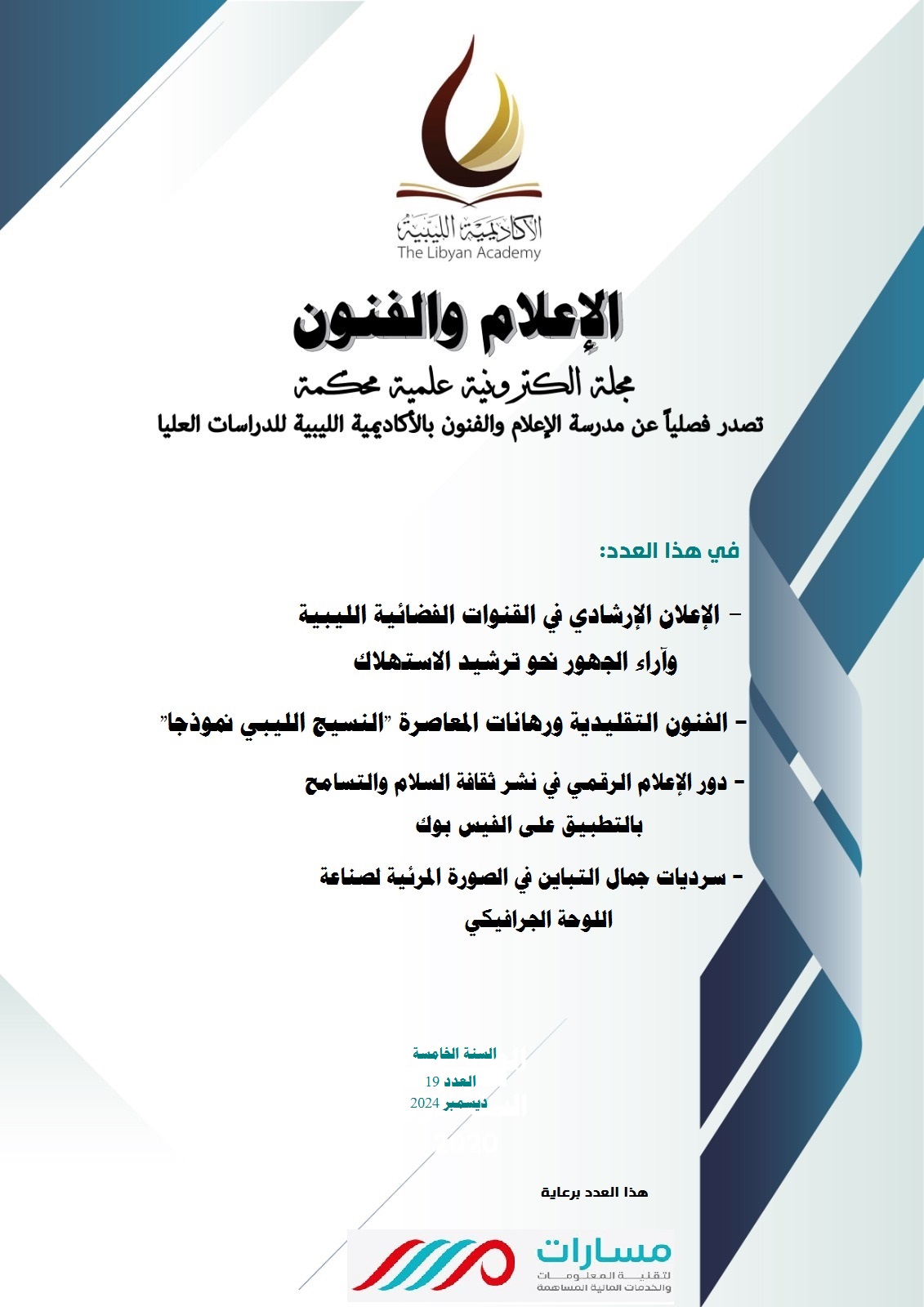دور الإعلام الرقمي في نشر ثقافة السلام والتسامح بالتطبيق على الفيس بوك
Main Article Content
Abstract
Abstract :
Digital media plays a major and prominent role in supporting national dialogue and national reconciliation at the present stage, which represents the effective and positive role played by digital media in spreading and promoting a culture of peace and tolerance, as the media and its means contribute to building a culture of societal change, achieving, and strengthening national identity.
Given the importance and seriousness of this role, some undisciplined media practices may pose a threat to national reconciliation. The study aimed to identify the role of digital media represented by Facebook in spreading a culture of peace and tolerance among members of society from the point of view of a number of faculty members at the Faculty of Arts.
The study relied on the descriptive approach using the sample survey method by surveying the opinions of a sample of (135) faculty members using a questionnaire form. The study reached a number of results, the most prominent of which is that the faculty members of the study sample have a high level of exposure to content related to spreading a culture of peace and tolerance, and the degree of exposure is medium to high.
The study also confirmed that among the reasons that prompted faculty members to follow the pages of influencers who publish about peace and tolerance is that they are interested in addressing and analyzing local events and are keen to spread the culture of peace and tolerance and share ideas and interests with followers from the study sample. The study also confirmed that among the reasons that prompted members of the study sample to follow the peace and tolerance content through the influencers' pages on Facebook is to follow events related to local affairs and learn more details about society and increase the level of culture and knowledge of events. The study also showed that influencers have a great impact in influencing faculty members in influencing their opinions and convictions about the culture of tolerance and peace, and how they spread the culture of peaceful coexistence among the various components of society and raise various topics of interest to all segments of society, as well as calling for brotherhood and tolerance and publishing positive posts in a rational manner. The study also monitored, through its hypotheses, the existence of a statistically significant correlation between the forms of interaction of the study sample with influencers and the level of integration with the content they are exposed to. The study also showed a statistically significant correlation between the level of integration of the study sample members with the influencers’ content about tolerance and peace and the study variables: the culture of tolerance, the size of the influencers’ following, and the average number of hours of daily exposure to Facebook. The study also showed no statistically significant differences in the level of exposure of the study sample members from faculty members to the culture of peace and tolerance and between the study variables for demographic characteristics: gender, years of experience, and age group.

